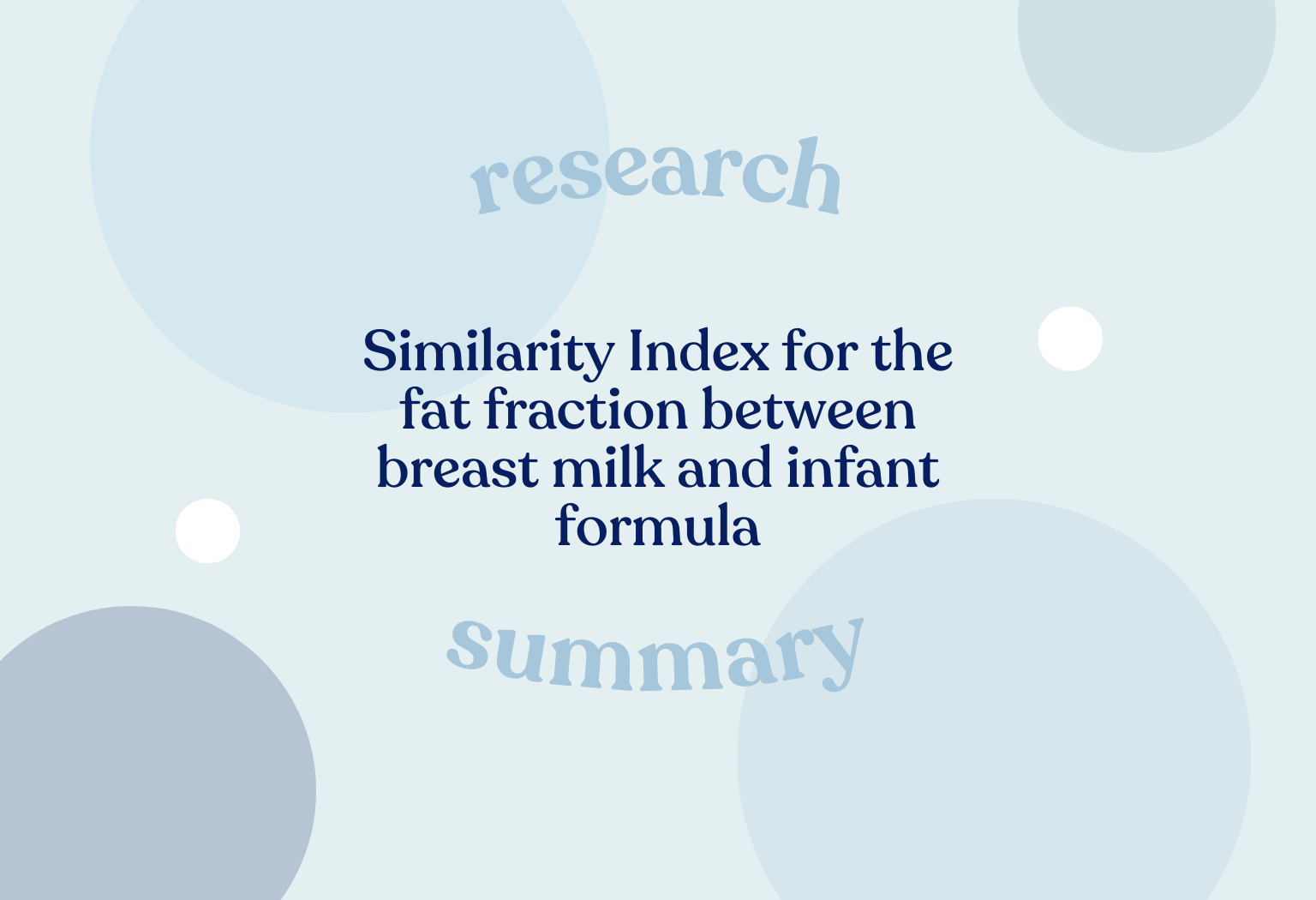The similarity index for the composition of total fats was highest in a cow’s cream-based formula with added sunflower oil, rapeseed oil, coconut oil and fish oil. The lowest similarity index was obtained in a vegetable oil-based formula with sunflower oil, rapeseed oil and fish oil. Again, the cow’s milk-based formulas had higher similarity indexes than the vegetable oil-based formulas.The individual similarity indexes calculated for a wide range of fat elements were averaged for each infant formula to give an average similarity index. The highest total similarity index was found for a cow’s milk cream-based formula with added fat sources of sunflower oil, rapeseed oil, coconut oil and fish oil and emulsifiers soy lecithin and mono-/di-glycerides. The two other cow’s milk-based formulas had the second and third highest similarity indexes. The threevegetable oil-based formulas had lower average similarity indexes. From these results it was concluded that using cow’s milk as the primary fat source brings the fat components of the infant formulas closer to that of breast milk than formulas using vegetable oils. Specific benefits noted were composition of membrane fats including cholesterol, which were not adequately replicated in the vegetable oil formulas. However, to fulfil all nutritional requirements, fat should be obtained from multiple sources. Fish or algae oil was also seen to be effective in this study for providing docosahexanoic acid (DHA), which supports neurodevelopment in infants. A lot of these individual parameters are not controlled by legislation, but still play important roles in infant health and contribute to overall similarity. Studies such as these are inherently limited by the fact that there are no standard values for levels of fat in breast milk, and as previously mentioned this study remains a comparison to Finnish breast milk only. The similarity indexes may differ in different populations. This study also did not measure every known fat present in breast milk, and it did not include fat-soluble vitamins. It would be impossible to class an infant formula’s fat fraction as identical to that of breast milk, due to the complex nature of these molecules and the likely presence of fats which have not been detected and studied as of yet. Therefore, in conclusion, cow’s milk-based formulas appear to have more similar fat fractions than vegetable oil-based formulas, but breast milk remains the superior option.
References
- Manson, W. G.; Weaver, L. T. Fat digestion in the neonate. Arch. Dis. Child. 1997, 76, F206– F211, DOI: 10.1136/fn.76.3.f206
- Gurnida, D. A.; Rowan, A. M.; Idjradinata, P.; Muchtadi, D.; Sekarwana, N. Association of complex lipids containing gangliosides with cognitive development of 6-month-old infants. Early Hum. Dev. 2012, 88, 595– 601, DOI: 10.1016/j.earlhumdev.2012.01.003
- Al-Abdi, S.; Al-Abdi, J.; Al-Aamri, M. Similarity Index Between Breast Milk and Infant Formula. EC Paediatrics 2017, 64, 91– 111
- Kumar, H.; du Toit, E.; Kulkarni, A.; Aakko, J.; Linderborg, K. M.; Zhang, Y.; Nicol, M. P.; Isolauri, E.; Yang, B.; Collado, M. C.; Salminen, S. Distinct Patterns in Human Milk Microbiota and Fatty Acid Profiles Across Specific Geographic Locations. Front. Microbiol.2016, 7, 1619, DOI: 10.3389/fmicb.2016.01619
- Fabritius, M.; Linderborg, K. M.; Tarvainen, M.; Kalpio, M.; Zhang, Y.; Yang, B. Direct inlet negative ion chemical ionization tandem mass spectrometric analysis of triacylglycerol regioisomers in human milk and infant formulas. Food Chem. 2020, 328, 126991, DOI: 10.1016/j.foodchem.2020.126991

